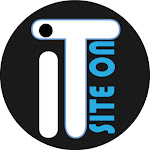If your USB flash drive is corrupted and you're experiencing format problems, there are a few steps you can take to try and fix it without losing your data. Here's a step-by-step guide to help you:
Do not format the USB drive: Formatting the drive will erase all data on it, so avoid doing this unless there's no other option.
Connect the USB drive to a different port or computer: Sometimes, the issue may be with the port or computer you're using. Try connecting the USB drive to a different USB port on your computer or try plugging it into another computer to see if the problem persists.
Use a different USB cable or adapter: Faulty USB cables or adapters can cause issues with the connection. If you're using an external USB adapter, try a different one, or use a different USB cable to connect the drive directly to your computer.
Run a virus scan: Malware or viruses can sometimes cause issues with USB drives. Use an updated antivirus program to scan the USB drive for any malicious files. If any viruses are detected, quarantine or remove them.
Try using Disk Management (Windows) or Disk Utility (Mac): Both Windows and Mac operating systems have built-in tools that can help repair corrupted USB drives without formatting. Here's how to use them:
- Windows: Connect the USB drive to your computer, right-click on the Start button, and select "Disk Management." Locate your USB drive in the list of disks, right-click on it, and choose "Change Drive Letter and Paths." Assign a new drive letter to the USB drive and click "OK." If this doesn't work, you can also try right-clicking on the USB drive and selecting "Properties" > "Tools" > "Check Now" to scan and repair any file system errors.
- Mac: Connect the USB drive to your Mac and open "Disk Utility" (you can find it in the Utilities folder within the Applications folder). Locate your USB drive in the left sidebar, select it, and click on the "First Aid" tab. Click on "Run" or "Repair Disk" to scan and repair any issues with the drive.
Use data recovery software: If the above steps haven't resolved the issue, you can try using data recovery software specifically designed for USB drives. These tools can help recover your data even from corrupted drives. Some popular options include "Recuva," "TestDisk," and "EaseUS Data Recovery Wizard." Follow the instructions provided by the software to recover your files.
7. Using the Command Prompt (CMD) to run the "chkdsk" command is another method you can try to repair a corrupted USB flash drive without losing data. Here are the steps:
Plug in your USB flash drive to your computer.
Go to the Start menu, type "cmd" in the search bar, and hit Enter. You should see "cmd.exe" or "Command Prompt" in the list of programs. Right-click on it and select "Run as administrator" to open an elevated Command Prompt window.
In the Command Prompt window, type the following command:
bashchkdsk /X /f USB_drive_letter:or
bashchkdsk USB_drive_letter: /fReplace "USB_drive_letter" with the actual drive letter assigned to your USB flash drive. For example, if your USB drive is assigned the letter "G:", you would enter:
bashchkdsk /X /f G:or
bashchkdsk G: /fThe "/X" parameter forces the drive to dismount before the scan, and the "/f" parameter indicates that you want to fix any errors found on the drive.
Press Enter to execute the command. The Command Prompt will start scanning and repairing the USB drive for errors. This process may take some time, depending on the size and condition of the drive.
Once the scan and repair process is complete, the Command Prompt will display the results. It will inform you if any errors were found and fixed.
After the process is finished, safely remove the USB flash drive from your computer.
By running the "chkdsk" command, you're instructing the system to check the file system integrity and repair any errors it encounters on the USB drive. This method can help fix certain issues that might be causing the corruption without formatting the drive and potentially recover your data.


